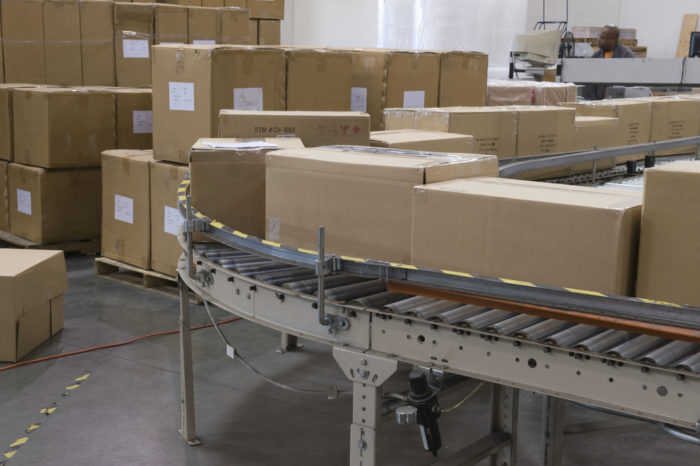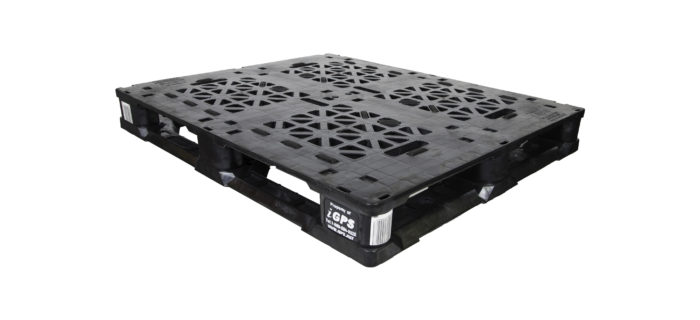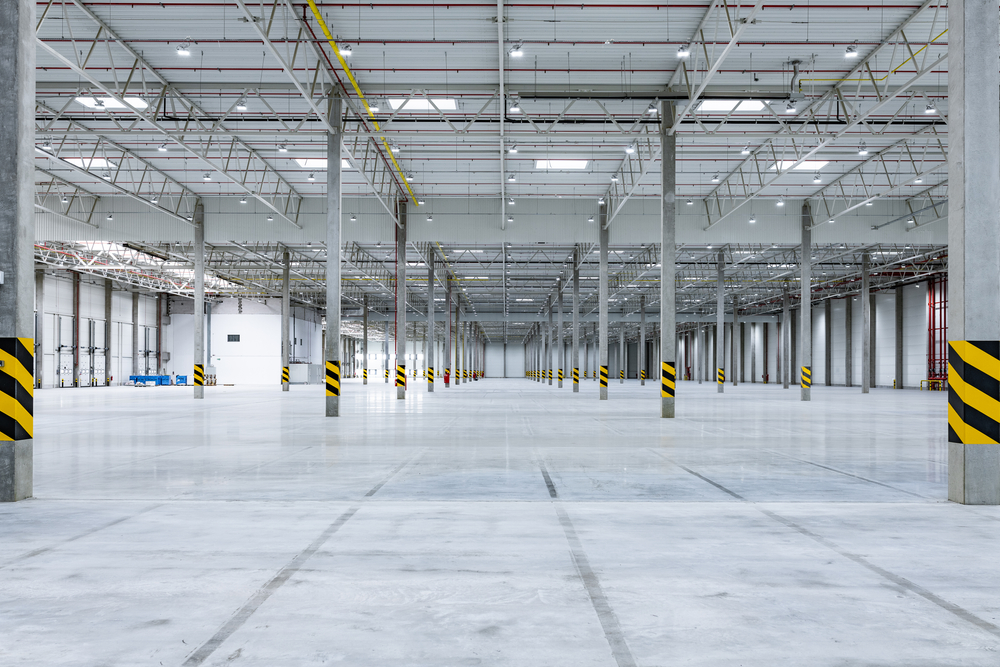One of the things that stands out in warehouse work is that when a warehouse nears maximum capacity, every operation takes a lot longer. Often, it becomes necessary to shift existing inventory around before freshly arrived inventory can be stowed into storage slots. This effectively causes each operation to take twice as much time, or more, as it would usually take. Warehouse space optimization doesn’t just keep a warehouse tidy and looking good in case anyone from corporate happens to drop by; rather, it directly affects the operational costs and efficiency of a warehouse.
A variety of techniques are available to make the best use of existing warehouse space. They include consolidating inventory, removing items from inventory, and expanding storage both horizontally and vertically. Strategies can include more than one of these warehouse optimization techniques and be tailored to warehouse layout, inventory types, and the frequency of product output.
Making the Most of Warehouse Space Starts with Analysis
 To make the best use of a warehouse facility, it is crucial to have a thorough understanding of the space available to work with and how it is currently being used. The warehouse footprint, architecture of the warehouse, the existing racking system, and any overhead space available should be taken into account.
To make the best use of a warehouse facility, it is crucial to have a thorough understanding of the space available to work with and how it is currently being used. The warehouse footprint, architecture of the warehouse, the existing racking system, and any overhead space available should be taken into account.
To fully optimize a warehouse’s space, it is necessary to consider the product type, intake, and output, and note factors such as:
- Door Use: Receiving and shipping docks often occupy separate areas in a warehouse. This can take up unnecessary space as well as waste time, as logistics managers often must travel from one dock to the other. Combining the two can free up space and streamline receiving and shipping.
- Putaway Time: The length and time it takes for products to travel the path from receiving to storage should be analyzed. This should be done for all types of products in the warehouse.
- Dwell Time: The average length of time different types of products remain in storage should be determined, including how that average changes across the course of a year and what factors cause any fluctuation.
- Pick Paths: It’s important to identify the optimal as well as the most used path from storage to the shipping docks for any product type. If certain products frequently ship together, the optimal path may be different than expected.
- Replenishment: It is also important to understand how much time it takes to replace a product or products that have been shipped out, whether this changes over time, and whether any changes are due to increased demand or decreased supply.
- Overstock: Warehouses frequently have inventory greater than they need to fill orders. This might be in preparation for expected seasonal demand later in the year, or due to a large order when prices were especially good on a product in order to hedge against a rise in prices later. The necessity of any overstock on a product should be assessed.
Warehouse space optimization requires careful consideration of all of these factors. Perhaps the easiest way to quickly increase warehouse space is to clear inventory from it. However, without careful consideration of the reasons behind overstock or long dwell times, a warehouse can find itself unable to fulfill orders. For example, Christmas products might be in the way for most of the year, but would be missed in December if they were moved off-site or disposed of.
Optimizing Warehouse Flow Patterns
 The benefit of an analysis like the one described above is that it allows managers to optimize warehouses not only to make the best use of their space, but also for the most efficient flow of products through that space. Products that are usually shipped out together can be stored next to each other to shorten pick times and increase overall efficiency and throughput. Items with long dwell times that tend to ship out all at once can be tucked into out of the way places until they are needed.
The benefit of an analysis like the one described above is that it allows managers to optimize warehouses not only to make the best use of their space, but also for the most efficient flow of products through that space. Products that are usually shipped out together can be stored next to each other to shorten pick times and increase overall efficiency and throughput. Items with long dwell times that tend to ship out all at once can be tucked into out of the way places until they are needed.
Techniques like this are a form of warehouse space optimization. While they do not increase the warehouse’s size, they help to make the most effective use of available space. This can reduce congestion in the warehouse, increase the operational space for staff, and reduce the time needed to intake products and pick them for shipment. To maximize a warehouse’s available space this way, some reconfiguration may be needed.
Warehouse Space Optimization Techniques
 A major goal in warehouse space management is to maximize the interior volume used to store products. Broadly, two basic strategies can be used.
A major goal in warehouse space management is to maximize the interior volume used to store products. Broadly, two basic strategies can be used.
- Narrowing Aisles: Most warehouses provide access space between pallet racks so that forklifts can access the racks to place and remove pallets. One of the easiest ways to maximize warehouse space is to narrow these aisles, or, in the case of fully automated deep lane storage, to remove them altogether.
- Vertical Maximization: Overhead space in many warehouses is underutilized. The obvious solution for warehouse space optimization is to improve cube utilization in the warehouse by using taller pallet racks. Going higher increases the volume available for pallet slotting.
There are limits to how narrow a warehouse’s aisles can be and how tall its pallet racks can go while still being serviced using forklifts. Automation in the warehouse removes these limits. Pallet shuttles or moles that can move pallets from one side of pallet racking to the other allow warehouses to dispense with aisles altogether. Automated Storage and Retrieval Systems (ASRS) can be equipped with floor-to-ceiling cranes that can stow and retrieve pallets at any height. However, optimizing warehouse space using automation does carry a risk. If something goes wrong deep within a pallet rack or a pallet breaks high above the warehouse floor, the costs are magnified due to the higher density of storage and the effort required to resolve the issue. Choosing high-quality, durable shipping pallets can minimize the likelihood of this issue occurring.
How Plastic Pallets Help Maximize Warehouse Space
 The majority of pallet requirements set forth by major grocery chains clearly specify that pallets should be in good condition and free of major repairs. The reason for this is that the older a wood pallet is and the more repairs that have been made, the more likely it is to break or cause a serious issue such as a machinery jam. This is a significant problem even in facilities where pallets are readily accessible and pallet failures and spills are straightforward to clean up. In a warehouse relying on automation to make maximum use of space, remedying a pallet failure is an exponentially more difficult task.
The majority of pallet requirements set forth by major grocery chains clearly specify that pallets should be in good condition and free of major repairs. The reason for this is that the older a wood pallet is and the more repairs that have been made, the more likely it is to break or cause a serious issue such as a machinery jam. This is a significant problem even in facilities where pallets are readily accessible and pallet failures and spills are straightforward to clean up. In a warehouse relying on automation to make maximum use of space, remedying a pallet failure is an exponentially more difficult task.
One excellent solution is plastic pallets. High-quality plastic shipping pallets are stronger, more lightweight, and more consistent than traditional wood pallets, helping to keep warehouse automation running smoothly with fewer issues and errors. Whether your warehouse makes heavy use of automation or not, plastic pallets work smoothly with warehouse space optimization techniques to allow warehouse workers to focus on the task of moving products through the warehouse, rather than clearing obstructions to product movement.
iGPS pallet pooling specializes in providing lightweight, durable, and reliable plastic pallets that keep the supply chain moving. Pair warehouse space optimization techniques with a pallet optimized for the modern supply chain by giving our team a call at 1-800-884-0225, emailing a specialist at switch@igps.net, or visiting our contact page.



